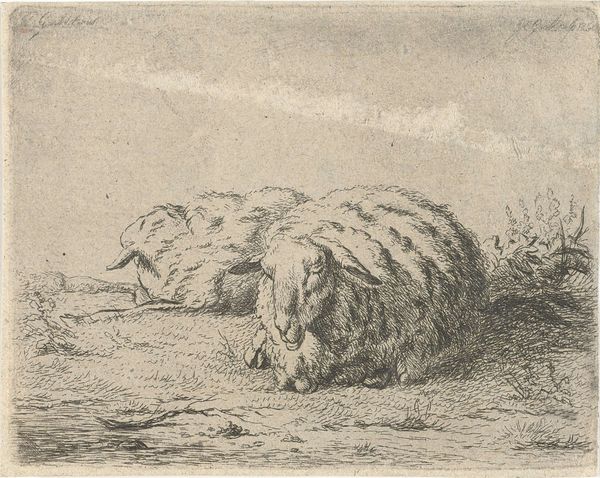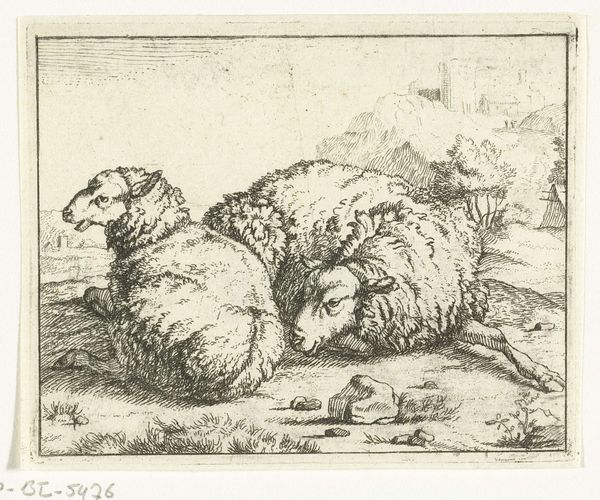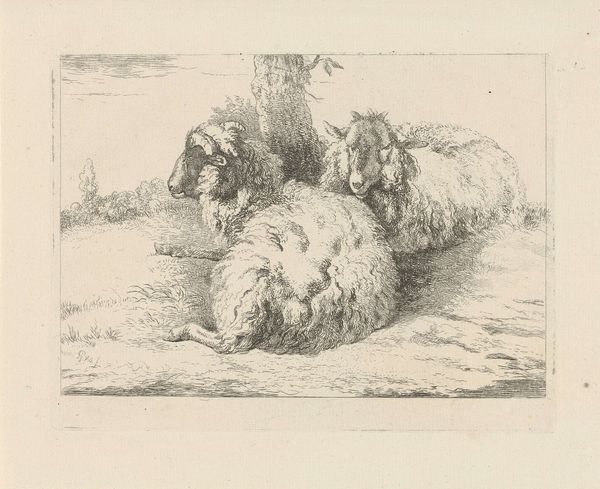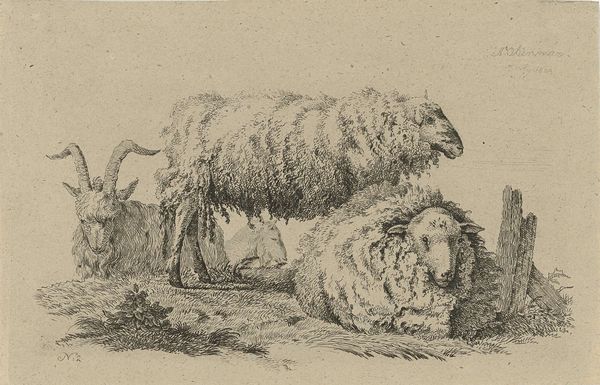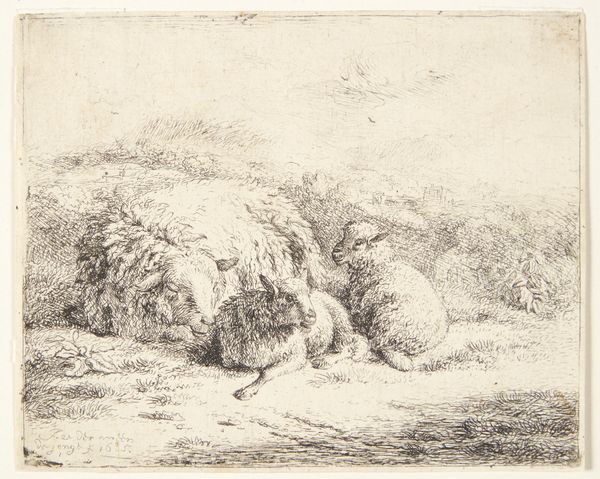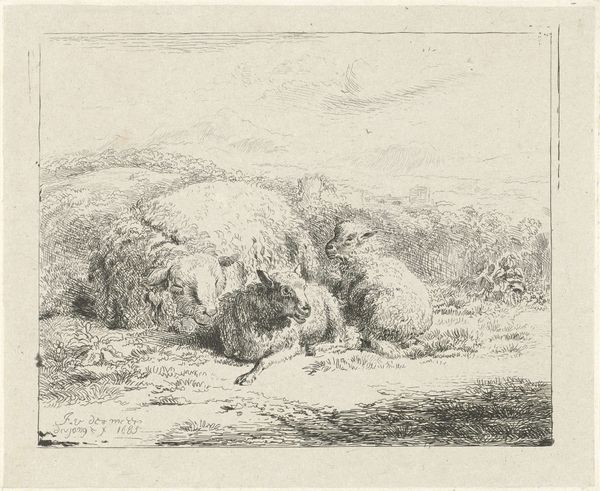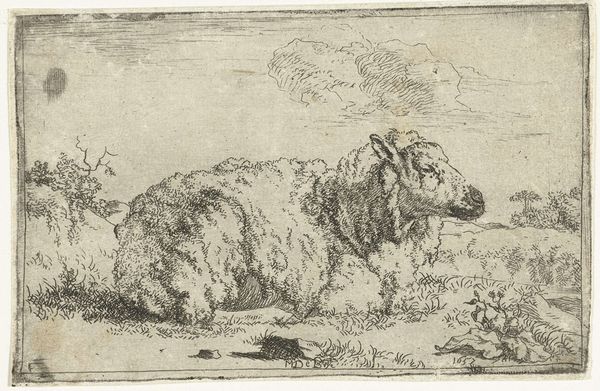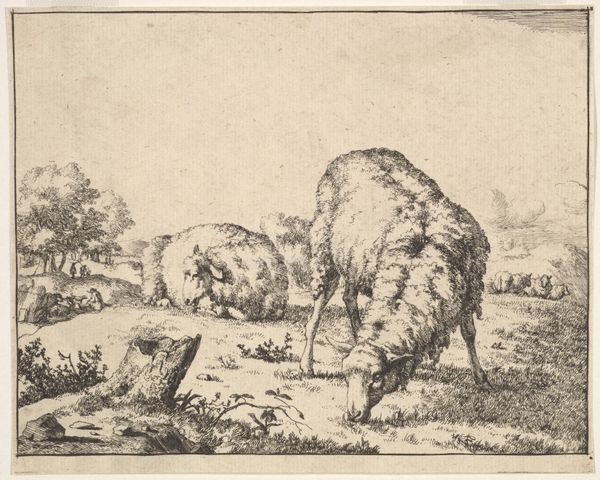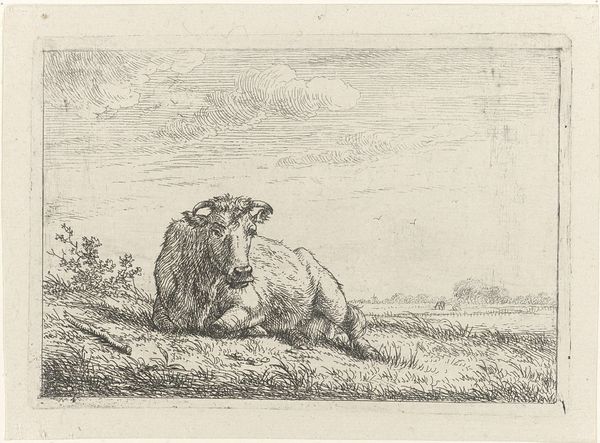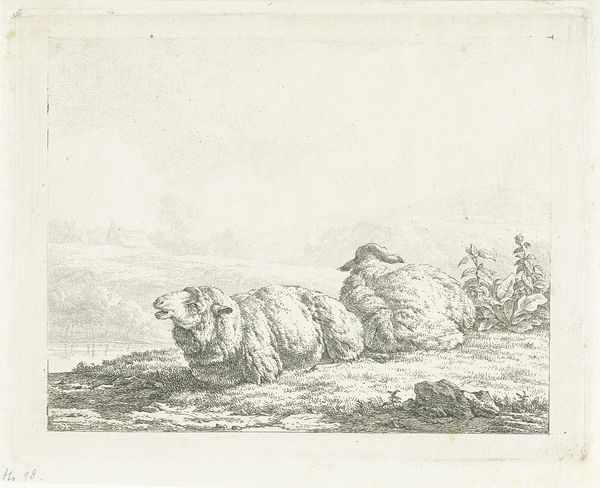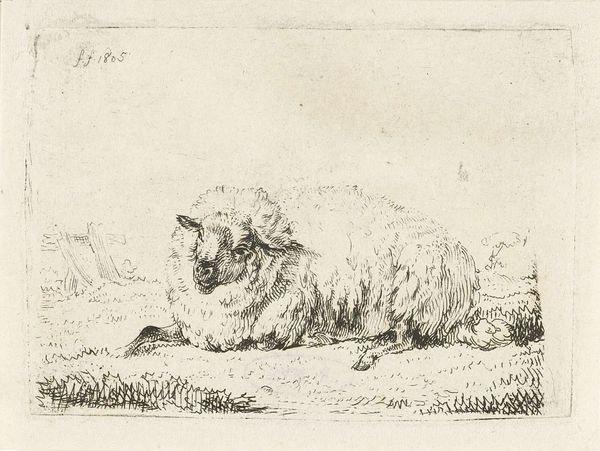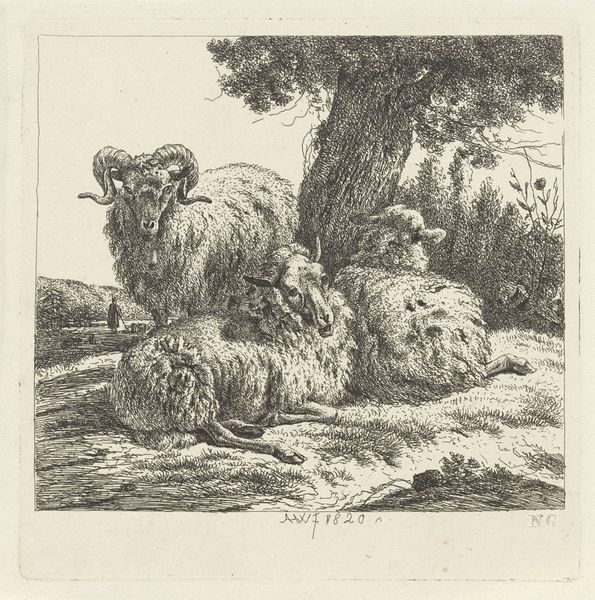
drawing, graphite
#
drawing
#
animal
#
pencil sketch
#
landscape
#
pencil drawing
#
graphite
#
realism
Dimensions: height 83 mm, width 105 mm
Copyright: Rijks Museum: Open Domain
Curator: Jacobus Cornelis Gaal's "Twee liggende schapen," dating to 1850, is rendered delicately in graphite. It currently resides here at the Rijksmuseum. The soft lines create a surprisingly tender depiction of rural life. Editor: My first impression is one of peaceful exhaustion, frankly. They are utterly still. You can almost feel the heat of the sun weighing on their wool. What do you find compelling about this piece? Curator: Beyond its aesthetic charm, it resonates with wider questions regarding the commodification of the pastoral in art. How does the rendering of these animals reinforce or subvert societal narratives around labor and agrarian life? I believe art plays an integral role in unpacking these dialogues. Editor: That’s an interesting reading, especially thinking about Gaal’s own socio-economic context. It certainly speaks to broader considerations about agricultural production at the time. You really see the texture of the fleece rendered by Gaal. It has an almost tangible presence. It certainly would have required intense focus and labor by the artist to translate it in this fashion, with graphite. Curator: Precisely, by understanding art as produced and engaged within given socio-political realities we enable deeper understandings of their power structures. Furthermore, is this drawing celebrating the pastoral idyll, or commenting on the reality of animal exploitation for material gain? These questions warrant thought. Editor: On closer examination, the simplicity of the materials belies the intense labor required to bring those forms to life. Thinking about those pencil strokes… it mirrors, in a sense, the slow, repetitive work these creatures might undertake. It definitely makes one think about production and the realities it entails. Curator: Indeed! By centering such considerations, we are compelled to question ingrained values regarding productivity, resources, and ultimately how art affects, or affects us to. I believe this is especially resonant for viewers living in highly digital and post-industrial age like our own. Editor: Yes, by paying close attention to these artistic practices, we start seeing the complex material network that supports not only artistic creations, but informs also social constructions about the world and value.
Comments
No comments
Be the first to comment and join the conversation on the ultimate creative platform.
